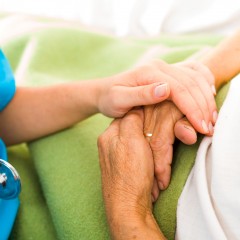Text Neck: A Real Pain in the Neck
Names like ‘text neck’ and ‘cellphone elbow’ might sound like the name of made-up conditions for a Saturday Night Live skit, but they are not. These conditions are real, painful, and becoming more prevalent, especially for our younger populations. When the iPhone was released in 2007, the tech world changed. Apple was the first company to create the modern smartphone. Nearly a decade and over 2.5 billion users later, we are seeing the...
Autism and iPads: The Digital Dash for Language Building
Raising a Child with Autism in the Digital Age In the United States today, 1 in 68 children are diagnosed somewhere on the autism spectrum. As many as 1.5 million Americans are living with autism, and this population is only expected to increase in the coming decade. To match the rising percentage of the population affected by autism, tech-companies and software developers have been working to provide families with apps able to assist...
Muhammad Ali and Parkinson’s: The Final Bout
There’s not much left to say about the passing of one of our countries greatest athletes. Nicknamed fittingly as “The Greatest,” Ali was a revolutionary both in and out of the ring. His speed and agility in the ring was unmatched, as well as his bravado and honesty outside of the ring. Diagnosed with Parkinson’s in 1984, the disease would later become his toughest and most trying opponent up until his death earlier this week. An...
Direct Access: How to Empower Patients and PTs
Louisiana is empowering patients and removing barriers to physical therapy with their recent passing of Senate Bill 291. This bill allows patients to have direct access to physical therapy. Traditionally, patients need to get a referral from a licensed doctor to be able to see a physical therapist. This bill is going to give patients more choices and conveniently accessible options. Direct access, or self-referral, is the ability for...
Ekso-Suit GT: Meet the Bionic Suit Ready For Clinics Worldwide
It is estimated that around 375,000 people suffer a spinal cord injury each year. Another 17 million people suffer a stroke. Between these two medical conditions, 60% of acute stroke survivors are left without the ability to walk, or need at least some form of assistance. It can seem like an uphill battle to provide someone with rehabilitative care for lost motor skills, yet new, robotic exoskeleton technology is serving to maximize...





